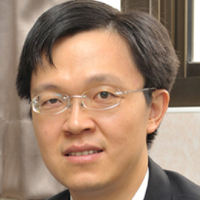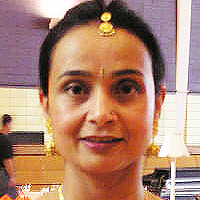Abstract
Research Article
Evaluation of genetic diversity in germplasm of paprika (Capsicum spp.) using random amplified polymorphic DNA (RAPD) markers
Rueda-Puente EO*, Renganathan P, Ruíz-Alvarado C, Hernández-Montiel LG and Prasath Duraisamy
Published: 27 September, 2017 | Volume 1 - Issue 2 | Pages: 080-086
Capsicum spp. is one of the most important economical horticulture crops due to its high consumption either by fresh vegetable or dried spice. Molecular genetic markers offer a number of applications in the genetic improvement of crop plants, which plays an important role in the areas of plant classification and breeding programs. The polygenetic characters of rare species, which are difficult to analyze by traditional methods can, be analyzed easily and classified by using molecular markers. In our study, genetic relationships of twenty-two paprika species were examined to estimate their genetic variations/similarities and to detect the polymorphism present within and among the paprika species by using RAPD-PCR markers. The results revealed that the maximum similarities among the 16 ICBD lines were 100%. The ICBD 03 had 76% similarity compared with other ICBD lines. The CC01 had comparatively low similarity with ICBD forms (30%), followed by EC01 (28%), EC02 (33%), CC02 (35%), and Kt.Pl-19 (60%). The similarity between EC01 and EC02 were 54%. Kt.Pl-19 showed different similarities compared to CC01 (41%), CC02, EC01 (38%), EC02 (29%) and ICBD 03 (40%). The different combinations were tried to optimize the RAPD-PCR profile, which helped to assessing the polymorphism/similarities within and among the Paprika germoplasms were studied.
Read Full Article HTML DOI: 10.29328/journal.jpsp.1001010 Cite this Article Read Full Article PDF
Keywords:
Polymorphism; Similarity; Genetic variations; Molecular markers
References
- Ananthan R, Subash K, Longvah T. Assessment of nutrient composition and capsaicinoid content of some red chilies. International Proceedings of Chemical. Biological and Environmental Engineering. 2014. 72, 1-4. Ref.: https://goo.gl/YLfJDM
- Baas-Espinola FM, Castro-Concha LA, Vázquez-Flota FA, Miranda-Ham M. Capsaicin synthesis requires in situ phenylalanine and valine formation in in vitro Maintained Placentas from Capsicum chinense. Molecules. 2016; 21: 799. Ref.: https://goo.gl/8aaog3
- Barbero GF, Liazid A, Palma M, Barroso CG. Ultrasound-assisted extraction of capsaicinoids from peppers. Talanta. 2008; 75: 1332-1337. Ref.: https://goo.gl/wc7h2J
- Barbero GF, Ruiz AG, Liazid A, Palma M, Vera JC, et al. Evolution of total and individual capsaicinoids in peppers during ripening of the Cayenne pepper plant (Capsicum annuum L.). Food Chemistry. 2014; 153: 200-206. Ref.: https://goo.gl/2N9Nheb
- Conforti F, Statti GA, Menichini F. Chemical and biological variability of hot pepper fruits (Capsicum annuum var. acuminatum L.) in relation to maturity stage. Food Chemistry. 2007; 102: 1096-1104. Ref.: https://goo.gl/DCwrww
- Garcés-Claver A, Arnedo-Andrés MS, Abadía J, Gil-Ortega R, ÁlvarezFernández A. Determination of Capsaicin and Dihydrocapsaicin in Capsicum Fruits by Liquid ChromatographyElectrospray/Time-of-Flight Mass Spectrometry. Journal of Agricultural and Food Chemistry. 2006; 54: 9303-9311. Ref.: https://goo.gl/CmfyJS
- Gnayfeed MH, Daood HG, Biacs PA, Alcaraz CF. Content of bioactive compounds in pungent spice red pepper (paprika) as affected by ripening and genotype. Journal of the Science of Food and Agriculture. 2001; 81: 1580-1585. Ref.: https://goo.gl/aTnLYK
- Govindarajan VS, Rajalakshmi D, Chand N, Salzer UJ. Capsicum-Production, technology, chemistry, and quality. Part IV. Evaluation of quality. Critical Reviews in Food Science & Nutrition. 1987; 25: 185-282. Ref.; https://goo.gl/Dpbq1D
- Islam MA, Sharma SS, Sinha P, Negi MS, Neog B, et al. Variability in capsaicinoid content in different landraces of Capsicum cultivated in north-eastern India. Scientia Horticulturae. 2015; 183: 66-71. Ref.: https://goo.gl/9oX227
- Kim S, Park J, Hwang IK. Changes in FA composition and antioxidative activity of pigment extracts from Korean red pepper powder (Capsicum annuum L.) due to processing conditions. Journal of the American Oil Chemists’ Society. 2002; 79: 1267-1270. Ref.: https://goo.gl/xw97qF
- Kozukue N, Han JS, Kozukue E, Lee SJ, Kim JA, et al. Analysis of eight capsaicinoids in peppers and pepper-containing foods by High-Performance Liquid Chromatography and Liquid Chromatography-Mass Spectrometry. Journal of Agricultural and Food Chemistry. 2005; 53: 9172-9181. Ref.: https://goo.gl/NqU9fH
- Blum E, Liu K, Mazourek M, Yoo EY, Jahn M, et al. Molecular mapping of the C locus for presence of pungency in Capsicum. Genome. 2002; 45: 702-705. Ref.: https://goo.gl/qytHft
- Karp A, Seberg O, Buiatti M. Molecular techniques in the assessment of botanical diversity. Annals Botany. 199; 78: 143-149. Ref.: https://goo.gl/Dd3zKB
- Edwards K, Johnstone C, Thompson C. A simple and rapid method for the preparation of plant genomic DNA for PCR analysis. Nucleic Acids Res. 1991. 19: 1349. Ref.: https://goo.gl/sEhjm7
- Marín A, Ferreres F, Tomás-Barberán FA, Gil MI. Characterization and quantitation of antioxidant constituents of sweet pepper (Capsicum annuum L.). Journal of Agricultural and Food Chemistry. 2014; 52: 3861-3869. Ref.: https://goo.gl/k98iub
- Tingey SV, Rafalski JA, Williams SJK. Genetic analysis with RAPD markers. In Proceedings of the Symposium on Application of RAPD Technology to Plant Breeding. Crop Science Society of America. Minneapolis MN. 1992.
- Staub J, Sequen FC. Genetic markers, map construction and their application in plant breeding. Horticultural Science. 1996; 31: 724-740. Ref.: https://goo.gl/HE5Gq3
- Doyle JJ, Doyle JL. Isolation of plant DNA from fresh tissue. Focus. 1990; 12: 13-15. Ref.: https://goo.gl/vWvYrR
- Rohlf EJ. NTSYS-pc: numerical taxonomy and multivariate analysis system, version 1.80. Applied Biostatistics Inc., Setauket. 1993.
- Lefebvre V, Palloix A, Caranta C, Pochard E. Construction of an intra specific integrated linkage map of pepper using molecular markers and doubled haploid progenies. Genome. 1995; 38: 112-121. Ref.: https://goo.gl/SoeRsC
- Rodriguez JM, Berke T, Engle L, Nienhuis J. Variation among and within Capsicum species revealed by RAPD markers. Theoretical and Applied Genetics. 1999; 99: 147-156. Ref.: https://goo.gl/aTk3nk
- Palacios C, González-Candelas F. Analysis of population genetic structure and variability using RAPD markers in the endemic and endangered Limonium dugourii (Plumbaginaceae). Molecular Ecology. 1997; 6: 1107-1121. Ref.: https://goo.gl/z3cX2T
- Cardoso SRS, Eloy NB, Provan J, Cardoso MA, Ferreira PC. Ferreira.Genetic differentiation of Euterpe edulis Mart. populations estimated by AFLP analysis. Molecular Ecology. 2000. 9: 1753-1760. Ref.: https://goo.gl/oWzNtR
- Gaudel M, Taberlet P, Till-Bottraud I. Genetic diversity in an endangered alpine plant Eryngium alpinum L. (Apiaceae), inferred from amplified fragment lenght polymorphism markers. Molecular Ecology. 2000; 9: 1625-1637. Ref.: https://goo.gl/wakDtb
- Ballester J, Vicente C. Determination of F1 hybrid seed purity in pepper using PCR-based markers. Euphytica. 1998. 103: 223-226. Ref.: https://goo.gl/iZ2PMN
- Zhou QC, Ma YQ, Zhang ZQ, Li XF, Ai X. Purity determination of pepper hybrid by randomly amplified polymorphic technique. J Hunan Agricul University. 1999; 25: 95-98.
- Prince JP, Lackney VK, Angeles C, Blauth JR, Kyle MM. A survey of DNA polymorphism within the genus Capsicum and the fingerprinting of pepper cultivars. Genome. 1995; 38: 224-231. Ref.: https://goo.gl/ndTZm5
Figures:

Figure 1

Figure 2
Similar Articles
-
Evaluation of genetic diversity in germplasm of paprika (Capsicum spp.) using random amplified polymorphic DNA (RAPD) markersRueda-Puente EO*,Renganathan P,Ruíz-Alvarado C,Hernández-Montiel LG,Prasath Duraisamy. Evaluation of genetic diversity in germplasm of paprika (Capsicum spp.) using random amplified polymorphic DNA (RAPD) markers. . 2017 doi: 10.29328/journal.jpsp.1001010; 1: 080-086
-
Determination of anthocyanin content in two varieties of Hibiscus Sabdariffa from Selangor, Malaysia using a combination of chromatography and spectroscopyYew-Keong Choong*,Nor Syaidatul Akmal Mohd Yousof,Jamia Azdina Jamal,Mohd Isa Wasiman. Determination of anthocyanin content in two varieties of Hibiscus Sabdariffa from Selangor, Malaysia using a combination of chromatography and spectroscopy. . 2019 doi: 10.29328/journal.jpsp.1001034; 3: 067-075
-
Comprehensive phenotypic characterization and genetic distinction of distinct goosegrass (Eleusine indica L. Gaertn.) ecotypesRobert A Kerr*,Tatyana Zhebentyayeva,Christopher Saski,Lambert B McCarty. Comprehensive phenotypic characterization and genetic distinction of distinct goosegrass (Eleusine indica L. Gaertn.) ecotypes. . 2019 doi: 10.29328/journal.jpsp.1001038; 3: 095-100
-
Gene polymorphisms CVPDr on some plants citrus in Bali IslandI Ketut Widnyana*,I Gusti Ayu Diah Yuniti,I Gede Putu Wirawan,I Nyoman Wijaya,Made Sritamin. Gene polymorphisms CVPDr on some plants citrus in Bali Island. . 2020 doi: 10.29328/journal.jpsp.1001049; 4: 036-041
-
Research progress on marker-assisted selection pyramiding breeding of disease resistance genes in wheatGuoliang Li,Yue Gao,Xiangzhao Meng,Zihui Liu,Xiulin Guo*. Research progress on marker-assisted selection pyramiding breeding of disease resistance genes in wheat. . 2022 doi: 10.29328/journal.jpsp.1001093; 6: 167-169
-
Fallow Lands of Tuva (Russia): 30 years of Steppe DemutationMakunina NI*. Fallow Lands of Tuva (Russia): 30 years of Steppe Demutation. . 2023 doi: 10.29328/journal.jpsp.1001115; 7: 113-117
-
Comparison of RGB Indices used for Vegetation Studies based on Structured Similarity Index (SSIM)Lóránt Biró*, Veronika Kozma-Bognár, József Berke. Comparison of RGB Indices used for Vegetation Studies based on Structured Similarity Index (SSIM). . 2024 doi: 10.29328/journal.jpsp.1001124; 8: 007-012
-
The Use of Thioxopyrimidine Derivatives as New Regulators of Growth and Photosynthesis of BarleyTsygankova VA*, Andrusevich YaV, Vasylenko NM, Kopich VM, Solomyannyi RM, Popilnichenko SV, Kozachenko OP, Pilyo SG, Brovarets VS. The Use of Thioxopyrimidine Derivatives as New Regulators of Growth and Photosynthesis of Barley. . 2024 doi: 10.29328/journal.jpsp.1001139; 8: 090-099
Recently Viewed
-
Sinonasal Myxoma Extending into the Orbit in a 4-Year Old: A Case PresentationJulian A Purrinos*, Ramzi Younis. Sinonasal Myxoma Extending into the Orbit in a 4-Year Old: A Case Presentation. Arch Case Rep. 2024: doi: 10.29328/journal.acr.1001099; 8: 075-077
-
Improvement of the Cognitive Abilities in a Chronic Generalized Anxiety Disorder and Moderate Depression Case using a Novel Integrated Approach: The Cognitome ProgramMohita Shrivastava*. Improvement of the Cognitive Abilities in a Chronic Generalized Anxiety Disorder and Moderate Depression Case using a Novel Integrated Approach: The Cognitome Program. J Neurosci Neurol Disord. 2024: doi: 10.29328/journal.jnnd.1001100; 8: 069-089
-
Neuroprotective Effect of 7,8-dihydroxyflavone in a Mouse Model of HIV-Associated Neurocognitive Disorder (HAND)Tapas K Makar, Joseph Bryant, Bosung Shim, Kaspar Keledjian, Harry Davis, Manik Ghosh, Ajay Koirala, Ishani Ghosh, Shreya Makar, Alonso Heredia, Malcolm Lane, J Marc Simard, Robert C Gallo, Volodymyr Gerzanich*, Istvan Merchenthaler*. Neuroprotective Effect of 7,8-dihydroxyflavone in a Mouse Model of HIV-Associated Neurocognitive Disorder (HAND). J Neurosci Neurol Disord. 2024: doi: 10.29328/journal.jnnd.1001101; 8: 090-105
-
Adult Neurogenesis: A Review of Current Perspectives and Implications for Neuroscience ResearchAlex, Gideon S*,Olanrewaju Oluwaseun Oke,Joy Wilberforce Ekokojde,Tolulope Judah Gbayisomore,Martina C. Anene-Ogbe,Farounbi Glory,Joshua Ayodele Yusuf. Adult Neurogenesis: A Review of Current Perspectives and Implications for Neuroscience Research. J Neurosci Neurol Disord. 2024: doi: 10.29328/journal.jnnd.1001102; 8: 106-114
-
Analysis of Psychological and Physiological Responses to Snoezelen Multisensory StimulationLucia Ludvigh Cintulova,Jerzy Rottermund,Zuzana Budayova. Analysis of Psychological and Physiological Responses to Snoezelen Multisensory Stimulation. J Neurosci Neurol Disord. 2024: doi: 10.29328/journal.jnnd.1001103; 8: 115-125
Most Viewed
-
Evaluation of Biostimulants Based on Recovered Protein Hydrolysates from Animal By-products as Plant Growth EnhancersH Pérez-Aguilar*, M Lacruz-Asaro, F Arán-Ais. Evaluation of Biostimulants Based on Recovered Protein Hydrolysates from Animal By-products as Plant Growth Enhancers. J Plant Sci Phytopathol. 2023 doi: 10.29328/journal.jpsp.1001104; 7: 042-047
-
Sinonasal Myxoma Extending into the Orbit in a 4-Year Old: A Case PresentationJulian A Purrinos*, Ramzi Younis. Sinonasal Myxoma Extending into the Orbit in a 4-Year Old: A Case Presentation. Arch Case Rep. 2024 doi: 10.29328/journal.acr.1001099; 8: 075-077
-
Feasibility study of magnetic sensing for detecting single-neuron action potentialsDenis Tonini,Kai Wu,Renata Saha,Jian-Ping Wang*. Feasibility study of magnetic sensing for detecting single-neuron action potentials. Ann Biomed Sci Eng. 2022 doi: 10.29328/journal.abse.1001018; 6: 019-029
-
Pediatric Dysgerminoma: Unveiling a Rare Ovarian TumorFaten Limaiem*, Khalil Saffar, Ahmed Halouani. Pediatric Dysgerminoma: Unveiling a Rare Ovarian Tumor. Arch Case Rep. 2024 doi: 10.29328/journal.acr.1001087; 8: 010-013
-
Physical activity can change the physiological and psychological circumstances during COVID-19 pandemic: A narrative reviewKhashayar Maroufi*. Physical activity can change the physiological and psychological circumstances during COVID-19 pandemic: A narrative review. J Sports Med Ther. 2021 doi: 10.29328/journal.jsmt.1001051; 6: 001-007

HSPI: We're glad you're here. Please click "create a new Query" if you are a new visitor to our website and need further information from us.
If you are already a member of our network and need to keep track of any developments regarding a question you have already submitted, click "take me to my Query."






















-zohair-moh’d-allouh.jpg)


























































































































